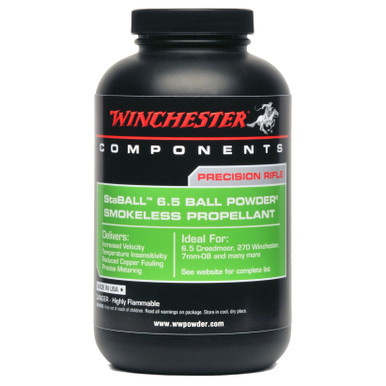westernrover
Member
- Joined
- May 4, 2018
- Messages
- 1,613
There was a tremendous innovation that occurred when the manufacturing of ball powders was introduced. Ball powders could be made at less expense and greater safety than extruded and flake powders. Hand loaders understand that extruded powders still have some advantages, including a tendency toward greater temperature stability and the availability of single-base formulations. Double-base ball powders often offer lower costs and better volumetric metering. I believe they also have a more robust supply chain and aren't as likely to run out during peak demand. The defense department recognized the process for producing ball powders was both more affordable and easier to sustain in periods of peak demand. Production of ball powder takes less than 2 days versus a weeks-long process for extruded. So they invested heavily in it so that now the supply chain is even more robust. 99% of small arms ammunition for the US Defense Department uses ball propellants, as does 60mm, 81mm, and 120mm mortars.
Hodgdon and today's "Alliant" are not manufacturers of powders. They are brands. The ball powders of both brands are manufactured at St. Marks by General Dynamics and the extruded and flake powders of both brands are manufactured by New River Energetics at the Radford Army Ammunition Plant operated by BAE Systems. Besides that, both brands import a great many propellants from foreign plants, none of which are made by Hodgdon or Alliant.
Powder prices are not generally a function of brand, but of the type of manufacturing process and its costs, as well as market factors like supply and demand. The supply chain can be affected by geopolitics and the global economy, and demand is affected particularly by (US) domestic politics and the domestic economy. However, the St. Marks ball powder plant was once owned by Olin and it produced many of the powders for its Winchester brand. That brand has since been licensed to Hodgdon who market both the Winchester ball powders and their own brand ball powders. Alliant offers some ball powders from St. Marks like their Power Pro powders. However, many more of Alliants powders are from the New River Energetics (Radford) plant, because their former parent company Alliant Techsystems (ATK) operated that plant prior to their spinning out the Alliant brand to Vista Outdoor and the Radford contract going to BAE. Besides that, many of Alliants powders come from costly sources in Belgium and Switzerland, whereas Hodgdon's imported powders are more likely to come from Australia where the exchange rate is more favorable.
Hodgdon and today's "Alliant" are not manufacturers of powders. They are brands. The ball powders of both brands are manufactured at St. Marks by General Dynamics and the extruded and flake powders of both brands are manufactured by New River Energetics at the Radford Army Ammunition Plant operated by BAE Systems. Besides that, both brands import a great many propellants from foreign plants, none of which are made by Hodgdon or Alliant.
Powder prices are not generally a function of brand, but of the type of manufacturing process and its costs, as well as market factors like supply and demand. The supply chain can be affected by geopolitics and the global economy, and demand is affected particularly by (US) domestic politics and the domestic economy. However, the St. Marks ball powder plant was once owned by Olin and it produced many of the powders for its Winchester brand. That brand has since been licensed to Hodgdon who market both the Winchester ball powders and their own brand ball powders. Alliant offers some ball powders from St. Marks like their Power Pro powders. However, many more of Alliants powders are from the New River Energetics (Radford) plant, because their former parent company Alliant Techsystems (ATK) operated that plant prior to their spinning out the Alliant brand to Vista Outdoor and the Radford contract going to BAE. Besides that, many of Alliants powders come from costly sources in Belgium and Switzerland, whereas Hodgdon's imported powders are more likely to come from Australia where the exchange rate is more favorable.



